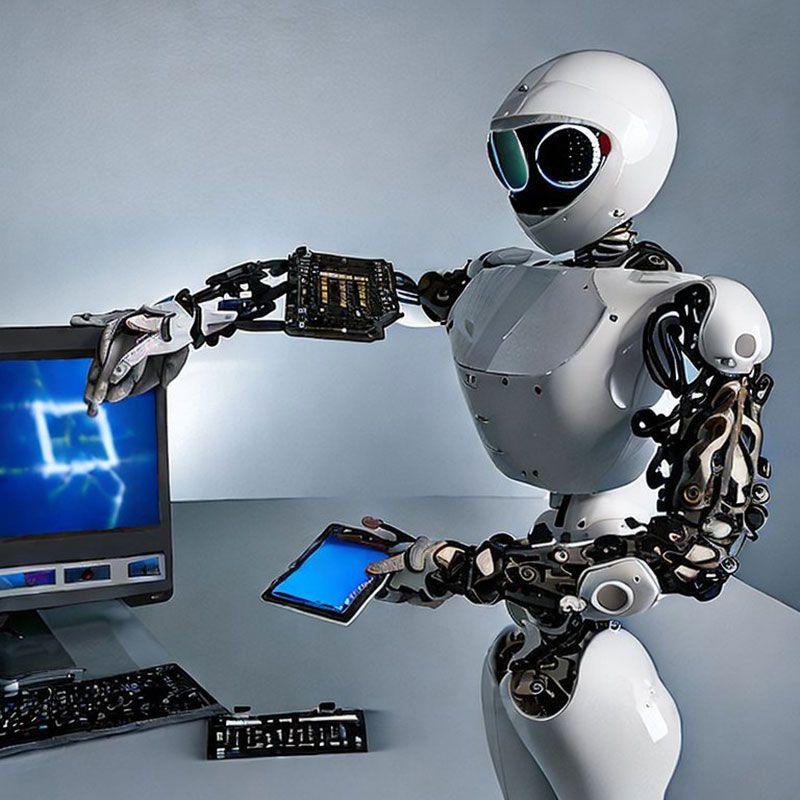Will AI Replace Jobs or Make Them Easier? The Reality in 2025
Generative AI continues to raise eyebrows across nearly every industry. It’s not just replacing repetitive tasks — it’s affecting creative work, legal research, even truck driving. As AI grows smarter and more accessible, the debate isn’t just “will it replace jobs?” but more subtly — how will it reshape them?
From coders to content creators, many people are wondering the same thing: Am I still needed?
Timeline of Events Fueling the Debate
- January 2025: A McKinsey report shows that 70% of employees believe GenAI will transform at least 30% of their work.
- April 2025: Duolingo announces a shift to an “AI-first” model, signaling reduced contractor roles.
- Ongoing: Writers Guild of America strikes for better wages — and more guardrails on AI use in writing.
And then there was the story of a tech startup writer who discovered she’d been… quietly replaced. Her name on Slack became “Olivia/ChatGPT.” Management called the bot more affordable. Her pink slip never said why. That kind of thing sticks with people.
“[Generative AI] will infiltrate every aspect of HR,” said Patrick Thibodeau, a senior news writer at TechTarget.
Official Statements and Legislative Efforts
The U.S. currently lacks a federal law governing AI usage across industries. Local and state regulations have picked up some of the slack:
- New York’s Local Law 144: Requires audits of algorithmic hiring tools.
- Senate Proposal (May 2024): A guide laying out future framework for labor protections and national security in AI regulation.
- The European Union’s AI Act: Aimed at creating legal standards and consumer protections.
Many top AI developers — OpenAI, Google DeepMind, Microsoft — have also formed the Frontier Model Forum to police their own systems, but skeptics wonder whether self-regulation is enough.
Jobs AI Is Already Replacing, Reimagining or Reframing
Let’s get down to the brass tacks. These are the 18 job categories most likely to change — or disappear — with increasing AI use.
- Administrative staff: Assistants now leverage tools like Microsoft 365 Copilot to automate schedules, summarize meetings and manage inboxes.
- Content writers: GenAI tools like ChatGPT blur the line between human and machine-generated writing, especially for generic or low-nuance content.
- Coders: AI can write syntactically correct code quickly. Those writing scalable, robust apps may adapt — others risk being replaced.
- Contractors: Duolingo specifically cited replacing some contractor roles with AI solutions in 2025.
- Customer service reps: Chatbots are coming for Tier 1 support. Translation, summarization and even sentiment analysis are fully automated in many companies.
- Drivers: Rideshare companies are investing heavily in autonomous fleets. Truck drivers’ responsibilities are shifting toward tech monitoring.
- Legal assistants: GPT-4 has passed the bar. AI can now handle contract reviews, legal research and summarize case law faster than an intern ever could.
- Marketers: Personalized emails, social media posts, lead scoring — much of this is now AI-generated. The #NotJustACadburyAd campaign illustrated this with flair and scale.
- Manufacturing: Robotic arms guided by AI already assist with welding and assembly. Sensors catch defects before human eyes do.
- Teachers: From detecting AI plagiarism to drafting tests, educators are feeling the squeeze — and some relief — from AI tools.
- Travel agents: AI assistants now book flights, suggest itineraries and analyze review data for recommendations.
- Translators: Real-time translation tools might cover simpler jobs — but emotional nuance and cultural fidelity still require humans.
- Finance advisors: AI is recommending investments and spotting fraud patterns — but humans still hold the trust card, for now.
- Graphic designers: Photoshop’s Generative Fill and Midjourney mean anyone can create high-quality visuals — but originality still shines.
- Engineers: Generative design is speeding up ideation and prototyping — but critical thinking and physics haven’t been automated.
- Human resources: AI reads resumes, flags top candidates and even drafts offer letters. Some HR departments have halved their hiring teams.
- Retail staff: AI systems like in Amazon’s stores automatically bill you as you walk out, while self-checkout kiosks reduce cashier roles across the board.
- Supply chain managers: Demand forecasting is now powered by machine learning algorithms. But AI hallucinations remain a risk in critical decision points.
Community Response: A Mix of Anxiety and Acceptance
Not everyone sees the rise of AI as a threat. Some employees welcome the chance to automate the parts of their jobs they barely tolerate. For instance, marketers using AI to generate social post ideas or teachers leaning on AI quiz generators are finding more time for the human side of their work.
Then again, workers being phased out by stealth — like “Olivia/ChatGPT” — have sparked concern.
Another area of concern: Disparities. A study from the Frank Hawkins Kenan Institute found that about 79% of working women hold roles vulnerable to AI automation, compared to 58% of men. If AI sifts some out of the workforce entirely, we might see new inequities widen.
What’s Next? Collaboration… Cautiously
Even though AI can do a lot, it still needs people. A process called reinforcement learning from human feedback helps models like ChatGPT fine-tune answers. Without human inputs, we risk model collapse — a condition documented in May 2023 when AI trained too long on AI-generated content and lost coherence.
So maybe the new shape of labor isn’t AI versus people — it’s AI with people. But who remains in the room, and who doesn’t, is still in flux.
Are we headed for a future where writers fact-check machines just like they once proofread other humans? Will engineers supervise AI output instead of drawing blueprints themselves? It’s too early to say, and far too complex for easy answers.
Stay curious. AI isn’t slowing down anytime soon.

